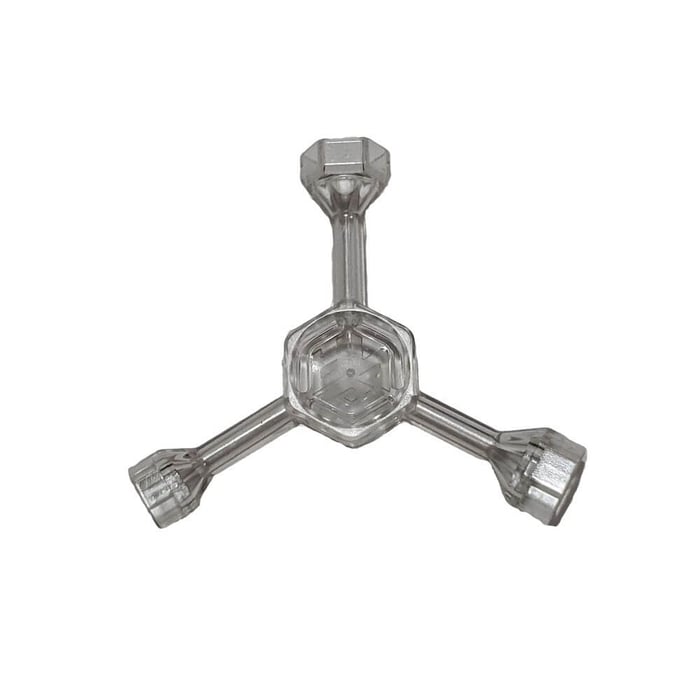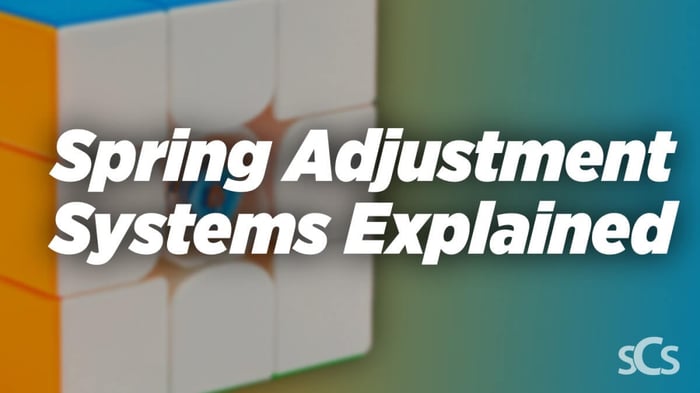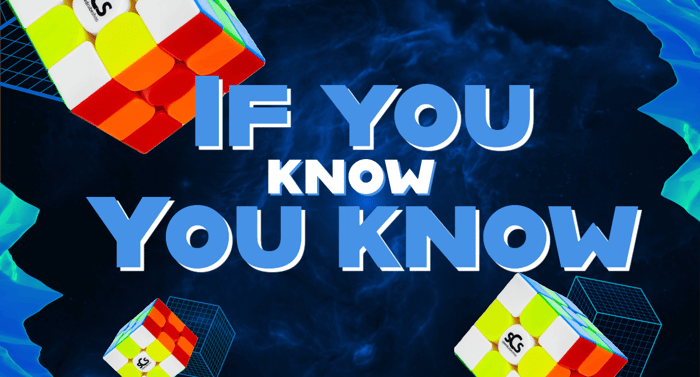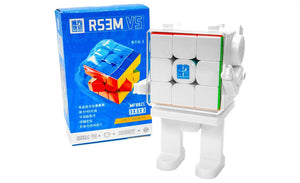Speed cubes have come a long way, and now even budget-friendly options offer ways to customize how they feel and perform. One of the main features you’ll find on most modern cubes, especially flagships, is a spring adjustment system. It’s a simple but powerful way to tweak how your cube handles. In this guide, we’ll break down what spring adjustment systems actually do and explore the different types you’ll find on the market today.
What do Springs in Cubes Do?
Most modern cubes, though not all, have springs tucked beneath the center caps, with one under each screw. On a standard NxN puzzle, that means six springs total, one for each face. These springs push back when the center pieces move upward, helping the cube keep its shape and preventing it from turning into a floppy mess. But springs don’t just hold the cube together, they also affect how it feels while turning. Over time, spring swaps became common among cubers looking to fine-tune their setup, and today, many 3x3 speed cubes come with built-in spring adjustment systems that let you customize the tension to match your style.
What is Spring Tension?
As long as not stretched or compressed beyond their elastic limit, most springs obey Hooke's law, which states that the force with which the spring pushes back is linearly proportional to the distance from its equilibrium length:
F=-kx
x is the displacement vector: The distance and direction the spring is deformed from its equilibrium length.
F is the resulting force vector: The magnitude and direction of the restoring force the spring exerts
k is the rate, spring constant or force constant of the spring, a constant that depends on the spring's material and construction. The negative sign indicates that the force the spring exerts is in the opposite direction from its displacement
So what does all that actually mean? Basically, the stronger the spring force, the more stable the cube feels when you're turning it. Different springs have different stiffness levels (Or K) and that affects how much resistance you get, which changes how fast or stable the cube feels. The more the spring is compressed (that’s the x in the equation), the more force it pushes back with.
Every cube brand handles this a little differently. Some use tension nuts, others use sliders or dual-adjustment systems. But they all do the same thing at the core, they change how much force the springs apply, which affects how flexible or controlled your turning feels.
What difference does this have to tensioning the screwhead in a regular cube?
When you tighten the screw on a regular cube, you're essentially compressing the spring more. That increases the force it pushes back with, which can make the cube feel more stable. But there’s a tradeoff, it also limits how far the center piece can move upward, which can hurt corner cutting. That’s why modern cubes with separate adjustment systems are such a big deal. They let you fine-tune tension and elasticity independently, so you can get the feel you want without sacrificing performance.
MoYu
MoYu introduced its first version of a spring adjustment system, which they called the dual adjustment system, as an optional add-on for the original WeiLong GTS (version 1). This system worked by changing the distance the spring was compressed, which adjusts the displacement (x) and in turn changes the force the spring applies. That shift in force directly affects how stable or flexible the cube feels when turning, depending on how you set the tension.

Source: MoYu-Cube Facebook
This system didn’t make a real comeback until the WeiLong GTS 3M, the third puzzle in the GTS lineup. This time, it came built-in and much more refined. Just like before, adjusting the spring distance let you control how stable or flexible the cube feels, balancing speed and stability against corner cutting and overall performance by tweaking the screwhead distance.
MoYu has continued to use this adjustment system in both its flagship and budget cubes, especially throughout the WeiLong WR line in the 2019, 2020, and 2021 models. However, with the release of the WeiLong WR M MagLev, we may be seeing a shift away from springs altogether as MagLev technology has taken over.
GAN
GAN was one of the early leaders in adjustable spring tension systems. Their 356 Air was the first cube to introduce a fully interchangeable spring system, known as the GAN Elasticity System (GES). Each GES nut had its own built-in spring with a different strength, effectively changing the spring constant (k) in Hooke’s Law and altering the cube’s overall feel. This system gained even more popularity with later models like the GAN 356 Air Master, UM, and SM, which included multiple sets of GES nuts that let you fine-tune the cube’s tension. These versions required a special tool to rotate the GES nuts and switch settings.

The GAN 356 XS was one of the first puzzles to feature both an interchangeable GES nut system and a built-in adjustable magnet system, making it a highly customizable and widely loved speed cube.
GAN eventually moved to a dual adjustment system, similar to what MoYu had introduced, where you can adjust both the spring compression and the height of the GES nut, which acts like a screwhead. This gave cubers more control over how their cube feels. The system first appeared in the GAN 356 XS, and was later used in the 356 X V2 and the GAN 11 M series.
However, GAN has also brought their interchangeable GES nut system to other puzzles like the Pyraminx, Skewb, and Megaminx, giving cubers similar spring adjustment options to what you'd find in their 3x3s.
QiYi
QiYi was a bit slower to jump on the spring tension adjustment trend, with only their sub-brand X-Man Design releasing a flagship puzzle that featured a form of spring adjustment through their own dual adjustment system.
X-Man Tornado 3x3 V3 (Magnetic)

$ 24.95
X-Man Tornado 3x3 V3 (Magnetic) is the cube used to set the former 3x3 world-record single of 3.13 seconds by Team SpeedCubeShop member Max Park and brings new features across three different versions! Version comparison Standard Flagship Pioneer MagLev -… >> SHOP PRODUCT <<
MS-Cube
A newer name in the speedcubing world, MS-Cube has introduced its own take on a dual adjustment system in their flagship MS3L and MS3L Enhanced magnetic cubes. These puzzles offer three levels of spring compression, giving cubers a simple but effective way to customize the feel.
DaYan
DaYan also developed its own version of a dual adjustment spring compression system, first featured in the Tengyun V2 M, the follow-up to their widely popular Tengyun V1. While the V2 introduced more customization, it didn’t quite match the popularity of the original. DaYan later brought the same adjustment system to the Zhanchi Pro M, a modern revival of their classic Zhanchi line.





























